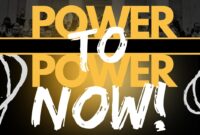The Journey From Free Trial to Lifelong User is an exciting path that many individuals embark on when discovering new products or services. This journey is often filled with exploration and decision-making, leading users to weigh the value of their free trial against the benefits of a long-term commitment. Understanding this transition is crucial, not just for companies seeking loyal customers but also for users who want to make informed choices.
As we delve deeper into this topic, we will explore the motivations behind transitioning from a free trial to a lifelong user, the factors influencing this decision, and the strategies companies can employ to foster this loyalty. It’s not just about the initial experience; it’s about creating lasting relationships that benefit both parties.
In today’s fast-paced world, the significance of effective communication cannot be overstated. Whether it’s in the workplace, among friends, or in any social setting, the ability to convey thoughts and emotions clearly and concisely is vital. This article explores various aspects of communication, offering insights into how we can enhance our skills, connect with others more meaningfully, and ultimately improve our relationships.
### Understanding Communication
Communication, at its core, is the process of exchanging information, ideas, thoughts, and feelings between individuals. It encompasses verbal, non-verbal, and written forms. The effectiveness of communication hinges not just on the words we choose but also on our tone, body language, and active listening skills. In this digital age, where instant messaging and social media dominate, the dynamics of communication are evolving, leading to new challenges and opportunities.
### The Importance of Active Listening
One of the most crucial components of effective communication is active listening. This involves fully concentrating, understanding, responding, and remembering what the other person is saying. Contrary to popular belief, listening is not merely the opposite of speaking; it requires effort and intention. Here’s how to become a better active listener:
1. Give Your Full Attention: Put away distractions. This means putting down your phone, turning off the TV, and making eye contact with the speaker.
2. Show That You’re Listening: Use body language and verbal affirmations to convey that you’re engaged. Nodding your head or saying “I see” can go a long way.
3. Provide Feedback: Paraphrase what the speaker has said to confirm your understanding. This not only shows that you are listening but also helps clarify any misunderstandings.
4. Defer Judgment: Avoid forming opinions while the other person is still speaking. This allows for a more open and honest dialogue.
5. Respond Appropriately: After the speaker has finished, respond in a way that shows you appreciate their perspective, even if you disagree.
### Non-Verbal Communication
Non-verbal communication plays an equally important role in how we convey messages. It includes facial expressions, posture, gestures, and even the distance we maintain from others during conversations. Understanding and utilizing non-verbal cues effectively can enhance communication significantly.
– Facial Expressions: These can convey a range of emotions without a single word being spoken. A smile, frown, or raised eyebrow can express feelings far more effectively than verbal communication sometimes.
– Posture: The way we sit or stand can indicate our level of engagement or confidence. Open and relaxed postures often suggest receptiveness, whereas closed postures can imply defensiveness.
– Gestures: Hand movements can emphasize points or express enthusiasm. However, cultural differences must be considered, as certain gestures can carry different meanings in various cultures.
– Proximity: The physical distance we maintain can denote intimacy or formality. Understanding the appropriate level of personal space can help in avoiding discomfort and misunderstandings.
### Overcoming Communication Barriers
Various barriers can hinder effective communication. Recognizing and addressing these obstacles is essential for fostering better interactions.
1. Language Differences: In our increasingly globalized world, language barriers can pose significant challenges. Utilizing simple language, avoiding jargon, and being patient can help bridge these gaps.
2. Cultural Differences: Awareness of cultural nuances is crucial. What is considered polite or respectful in one culture might be viewed differently in another. Taking time to understand diverse backgrounds can enhance mutual respect and understanding.
3. Emotional Barriers: Personal emotions can cloud judgment and hinder communication. It’s important to recognize these feelings and try to manage them before engaging in discussions.
4. Physical Barriers: In some cases, physical distance or poor technology can interrupt communication flow. Ensuring a quiet, comfortable environment and using reliable technology can help mitigate these issues.
### The Role of Empathy in Communication
Empathy, the ability to understand and share the feelings of another, is a cornerstone of effective communication. It fosters emotional connections and helps create a safe space for open dialogue. Here’s how to cultivate empathy in your interactions:
– Practice Perspective-Taking: Consider the situation from the other person’s viewpoint. This can provide valuable insights into their feelings and motivations.
– Validation: Acknowledge the other person’s feelings, even if you don’t necessarily agree with their point of view. This validation can reinforce their trust in you.
– Be Open-Minded: Approach conversations with the intent to learn rather than to respond. This mindset encourages deeper understanding and connection.
### Communicating in the Workplace
In professional settings, effective communication is essential for collaboration and productivity. Here are some strategies to enhance workplace communication:
1. Clarity and Conciseness: Be clear and to the point in your communication. Whether in emails, meetings, or presentations, clarity reduces the likelihood of misunderstandings.
2. Encourage Feedback: Foster an environment where team members feel comfortable sharing their thoughts and feedback. This openness can lead to improved processes and stronger team dynamics.
3. Use Technology Wisely: Leverage tools like project management software, chat applications, and video conferencing to streamline communication. However, be mindful of over-reliance on technology, which can sometimes lead to miscommunication.
4. Regular Check-Ins: Schedule regular meetings or check-ins to discuss progress, challenges, and ideas. This practice keeps everyone aligned and ensures accountability.
### The Impact of Digital Communication
The rise of digital communication has transformed the way we interact. While it offers convenience and speed, it also presents new challenges. Here are some tips for effective digital communication:
– Be Mindful of Tone: Written communication can often be misinterpreted. Use emojis or exclamation points when appropriate to convey tone.
– Proofread: Take time to proofread your messages. Typos and grammatical errors can undermine your professionalism.
– Know Your Audience: Tailor your communication style according to your audience. Formality may be required in some contexts, while a casual tone might be more suitable in others.
– Set Boundaries: In a world where we are constantly connected, it’s essential to establish boundaries to prevent burnout. Designate specific times for checking emails or messages.
### Conclusion
Effective communication is a multifaceted skill that requires ongoing practice and reflection. By honing our active listening abilities, recognizing non-verbal cues, and cultivating empathy, we can foster better relationships in both our personal and professional lives. The journey of improving communication skills is continuous, but the rewards—stronger connections, enhanced collaboration, and increased understanding—are well worth the effort. Embrace the art of communication and watch as it transforms your interactions for the better.
Ultimately, The Journey From Free Trial to Lifelong User illustrates the importance of trust and satisfaction in customer relationships. As companies refine their offerings and engage users effectively, the potential for turning trials into lifelong commitments grows significantly. By understanding the nuances of this journey, both businesses and users can achieve mutually beneficial outcomes, paving the way for a thriving partnership.
FAQ: The Journey From Free Trial To Lifelong User
What defines a successful transition from free trial to user?
A successful transition often includes a positive user experience during the trial, clear communication of value, and tailored follow-up that addresses user needs.

How long does it typically take for users to decide after a free trial?
The decision timeframe can vary widely, but many users take anywhere from a few days to a couple of weeks to evaluate their experiences before committing.
What factors can increase the likelihood of converting a free trial user?
Factors include personalized onboarding, effective customer support, perceived value, and timely reminders or incentives to convert.
Can free trials work for all types of products?
While free trials can be effective for many products, they are particularly beneficial for subscription-based services or software where users can immediately see value.
What role does customer feedback play in this journey?
Customer feedback is vital as it helps companies understand user experiences, identify areas for improvement, and enhance the overall value proposition during and after the trial.



